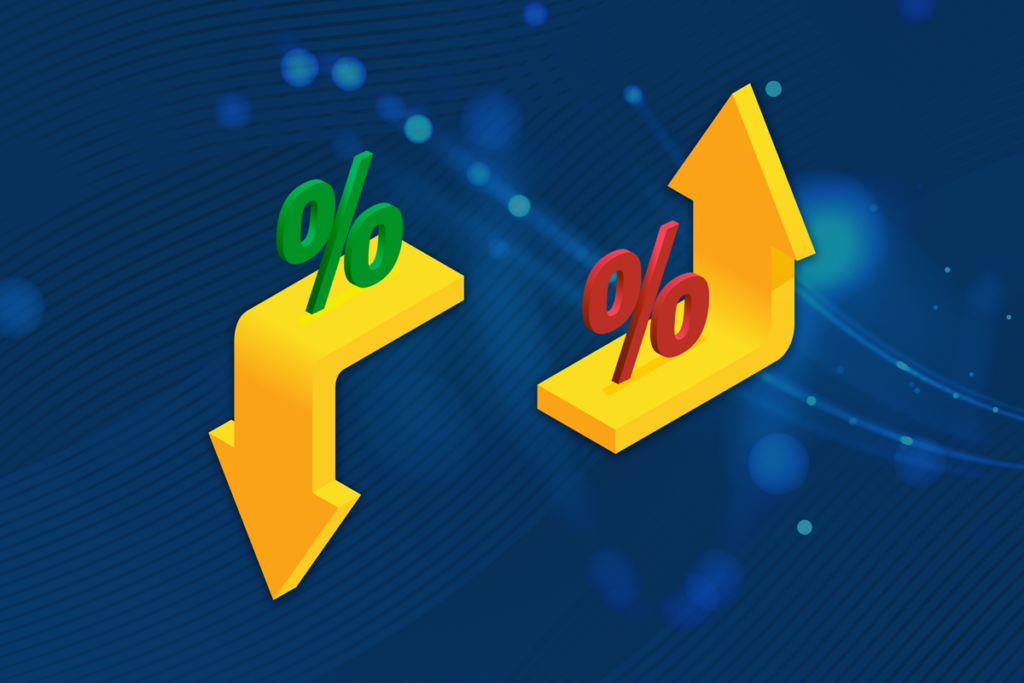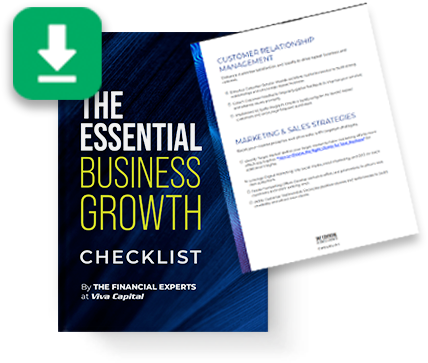
What’s the difference between a factor rate vs. an interest rate? You’ll see both these terms in relation to your total cost as you explore business funding options. However, they’re associated with different funding types, and how each is used to calculate the total cost of funding is distinct. On this page, we’ll walk you through how they work, plus explore the pros and cons of each, so it’s easier to assess your funding options and make the best choice for your business.
What is the Difference Between a Factoring Rate and an Interest Rate?
First, let’s look at the definitions of each and when you’ll see the terms.
What is a Factoring Rate?
A factoring rate is seen most often when you’re obtaining an advance on receivables. It’s used to calculate the factoring fee or the total amount to get the advance. It’s represented as a decimal number multiplied by the total funds being advanced to calculate the total payback.
For example, your factoring rate might be 1.2. If your advance is $10,000, your payback is $12,000, and the factoring fee is $2,000.
What Types of Funding Use a Factoring Rate?
- Invoice Factoring
- Merchant Cash Advances (referred to as a multiplier)
What is an Interest Rate?
An interest rate is seen more often when you’re obtaining traditional financing. It’s represented as a percent and is multiplied by the total outstanding principal to calculate interest fees.
For example, your interest rate might be 7.75 percent. If 7.75 percent interest is applied to a $10,000 loan, the interest fees will total $775. Your total payback would then be $10,775.
What Types of Financing Use an Interest Rate?
- Traditional small business Loans
- Small Business Administration (SBA) Loans
- Business Lines of Credit and Credit Cards
- Commercial Real Estate Loans
- Equipment Loans
Factor Rate vs. Interest Rate vs. APR
Looking at the factor rate vs. the interest rate examples above, it’s easy to see how the cost of funding differs. In the real world, however, lenders don’t simply apply the interest rate to the principal. They also add in fees and compound the interest monthly. The annual interest rate (APR) takes this into consideration, so it’s easier to see how terms compare even if they’re marketed differently.
How is a Factoring Rate Determined?
Factor rates vary based on industry, volume, payment terms and account debtors, and other considerations. Most factor rates are between 1.1 and 1.5, though some climb to around 1.9. Request a quote from Viva to find out your rate.
Calculating the Total Cost of Funding with a Factoring Rate
Payback Amount = Amount Advanced x Factor Rate
Let’s say that you receive a $10,000 advance with a 1.2 factor rate and clear the balance in 90 days. The calculation is $10,000 x 1.2 = $12,000. So you’ll pay $2,000 for the advance and repay a total of $12,000.
How is the Interest Rate Determined?
Interest rates vary based on the type of financing, qualifications of the borrower, lending institution, amount of loan, length of loan, and other considerations. For example, a well-qualified borrower may be able to obtain an SBA loan with as little as 4.5 percent interest, though 7.75 percent is more common per NerdWallet. Conversely, the average business credit card has an interest rate of 20.46 percent, according to The Balance.
Calculating the Total Cost of Financing with an Interest Rate
Now, let’s use the same starting numbers but managed as an interest rate. You receive a $10,000 loan with a 7.75 percent interest rate, $215 in loan fees, and a one-year repayment window, as shorter terms are not generally available for loans.
If we were calculating straight interest, the formula would be (Principal + Fees) x % Interest, the interest would be $791.66, and the total payback would be $11,006.66.
However, interest-based borrowing usually compounds monthly. Rather than paying 7.75 percent of the total, you pay a percentage of that month’s principal balance, which reduces each month as you make payments.
With this in mind, your total payback is $10,648.88 over the course of a year, including $10,000 in principal, $215 in fees, and $648.88 in interest. If the loan is stretched out for two years, the interest paid climbs to $844.99, so you’re paying back $11,059 over the course of the loan.
Comparing a Factor Rate vs. the Interest Rate
The one-year example above is typical of an “average” SBA loan, and it comes in about $1,341 less than the factor rate option.
The difference isn’t quite as remarkable when compared to an “average” business credit card rate. If paying back a $10,000 credit card bill with no additional fees, your total payback is $11,142.58, including $10,000 in principal and $1,142.58 in interest. You’d save around $857 with the credit card. The catch: many people only pay the minimum required payment each month. Under those terms, it will actually take 346 months (28 years) to pay off the balance, and you’ll pay $16,056.59 in interest. If you aren’t able to pay off credit card debt quickly, a factor rate option can be considerably cheaper.
Factoring Rate Pros and Cons
Now that you understand how the fees differ let’s break apart the pros and cons of going with a factoring rate option.
Pros of a Factoring Rate
- It’s usually much easier to qualify for funding when a factoring rate is involved.
- Budgeting is often easier because the principal and factor rate are known from the beginning and don’t change.
Cons of a Factoring Rate
- You may pay more overall for funding compared to traditional funding options, especially if you have set terms and aren’t using lines of credit.
- Early repayment doesn’t always reduce the cost.
- Shorter payment windows are usually expected.
Situations When Factoring Rate Funding May Work Best
- You need funding within days as opposed to weeks or months from now.
- Your business is young and/or doesn’t have a strong credit rating yet.
- You prefer not to accrue debt.
- Your business has a steady cash flow.
Interest Rate Pros and Cons
Next, let’s look at some pros and cons of an interest rate option.
Pros of an Interest Rate
- The cost to obtain funds is usually less.
- The repayment window is typically longer.
- Early payoff reduces the overall cost of borrowing.
Cons of an Interest Rate
- The amount due can fluctuate month-to-month, which may make budgeting more difficult.
- It’s harder to qualify for funding options that leverage an interest rate.
- It’s easy to get buried in debt with interest options, especially if you’re using lines of credit.
Situations When Interest Rate Financing May Work Best
- You’re ok waiting weeks or months to receive funding.
- Your business is at least two years old, has a strong credit rating, and has a healthy annual revenue.
- You’re comfortable accruing debt and are certain you can make payments early or on time.
- You want to reduce your overall cost to borrow by paying off the balance early.
Get Matched with the Right Funding for Your Business Needs
Small and midsized businesses are underserved by traditional lending channels. Obtaining a loan is often difficult and time-consuming, plus few receive the full amount of funding needed. However, organizations like Viva Capital Funding exist to fill this gap. We offer solutions such as invoice factoring, short-term loans, and equipment loans to empower growing businesses. Request a free rate quote to learn more or get started.
- 6 Proven Customer Retention Tips to Drive Long-Term Loyalty - June 4, 2025
- 5 Key Traits of a Top Factoring Company (And How Viva Stacks Up) - May 22, 2025
- The Impact of Late Payments: How Factoring Protects SMEs - April 11, 2025



